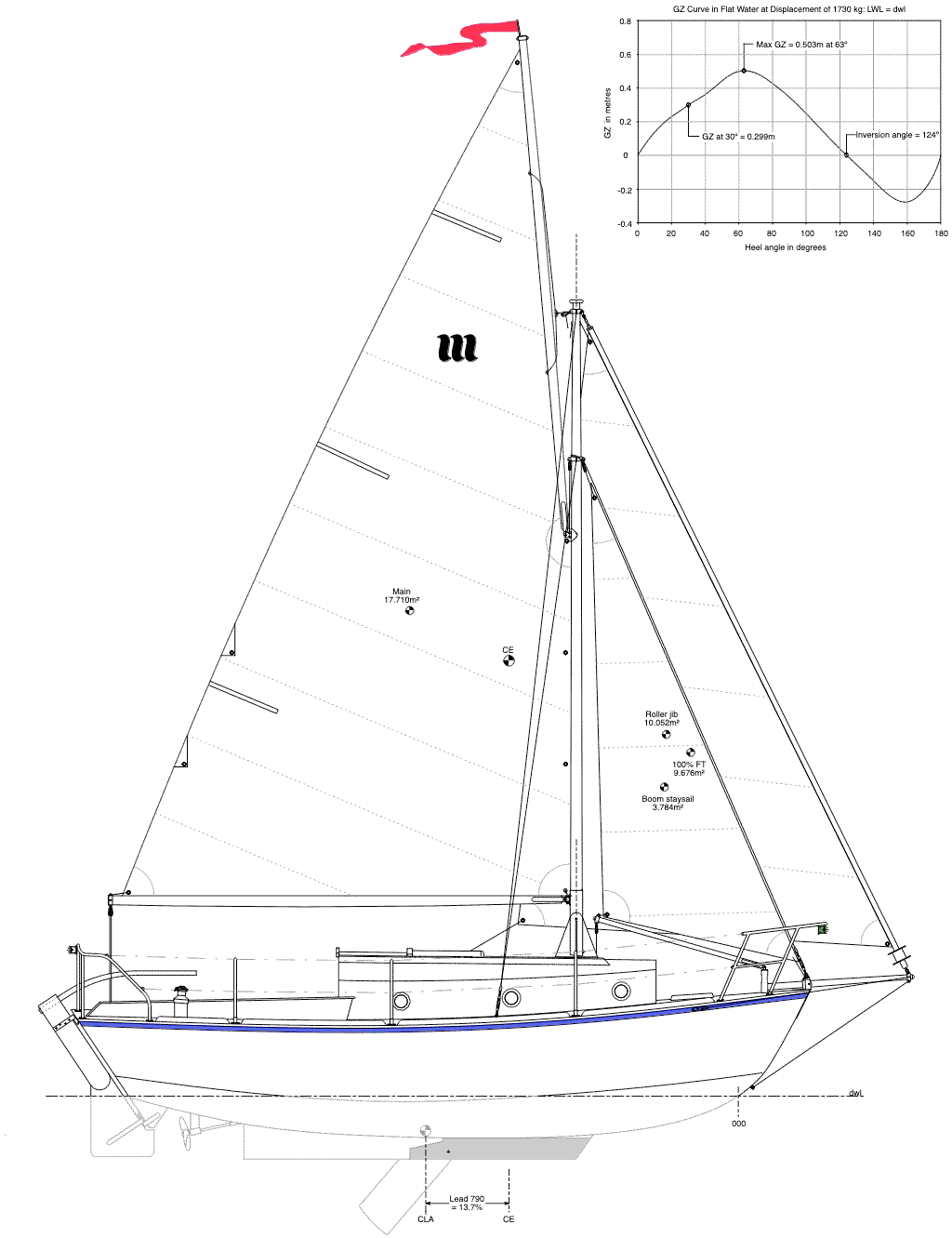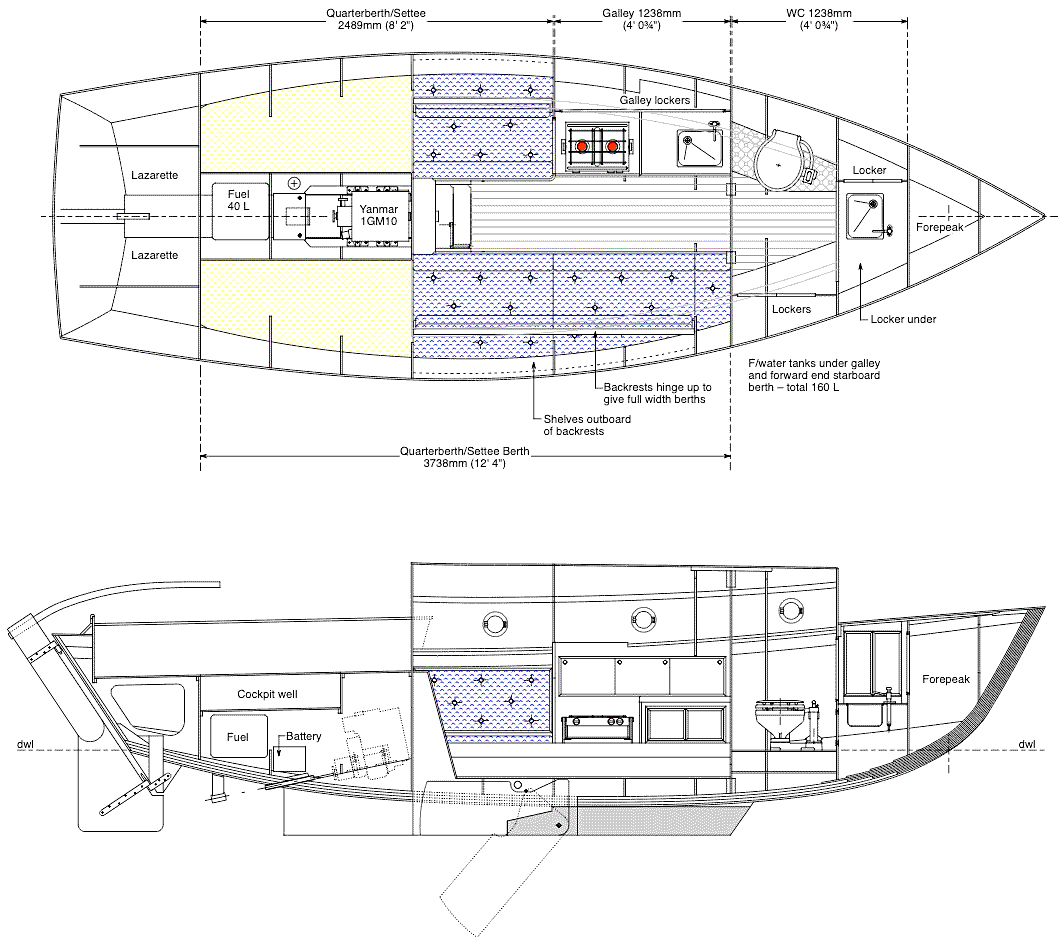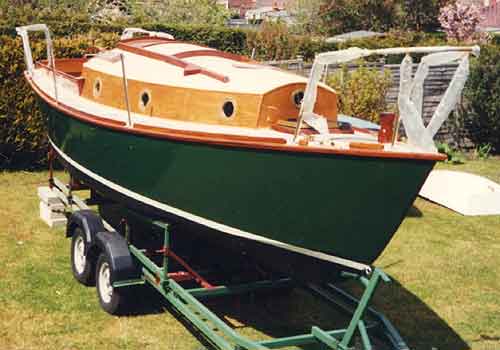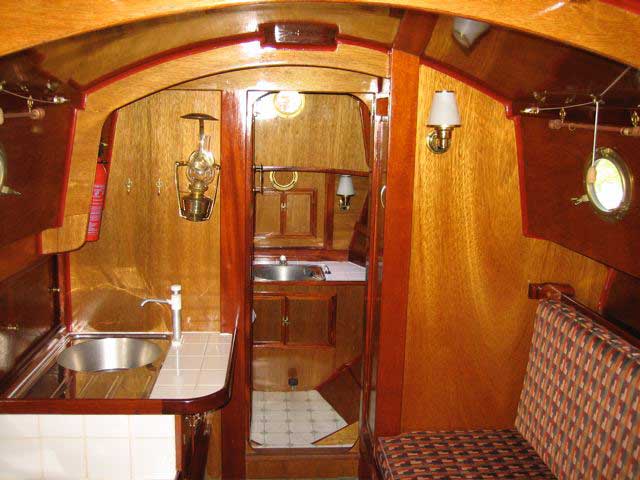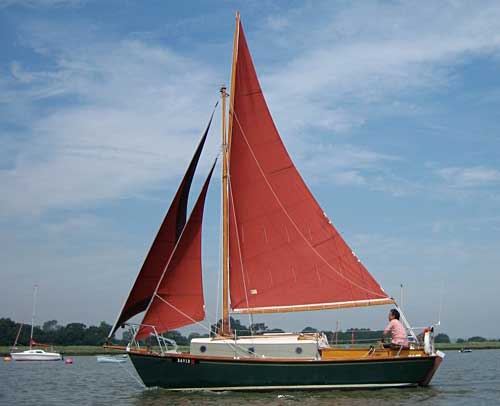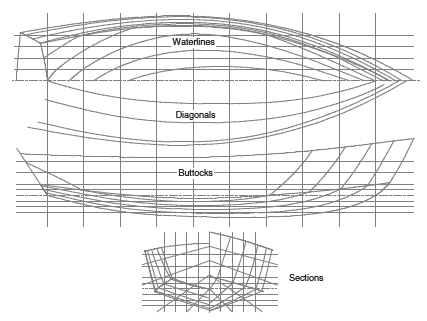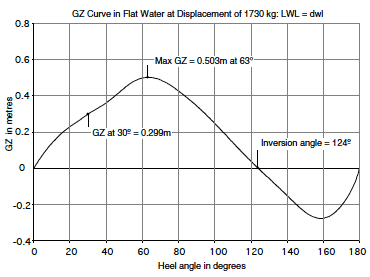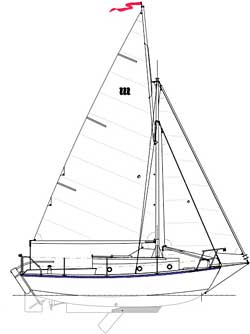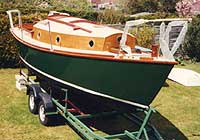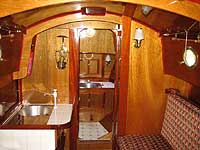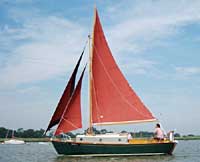| Specification | ||
|---|---|---|
| LOA (excl. bowsprit) | 7.010m | 23'0" |
| LWL | 5.785m | 18'11¾ |
| Beam | 2.317m | 7'7¼ |
| Draft, board up | 0.600m | 1'11⅝ |
| Draft, board down | 1.320m | 4'4" |
| Displacement on dwl | 1.730kg | 3814lbs |
| Ballast | 0.718kg | 1583lbs |
| Main area | 17.710m2 | 190.63ft2 |
| 100% foretriangle | 9.676m2 | 104.15ft2 |
| Staysail | 3.784m2 | 40.73ft2 |
| Roller Jib | 10.052m2 | 108.20ft2 |
| Headroom | 1.490 m | 4'10⅝" |
| Engine | 6-9kw | 8-12bhp |
| EU Category B - Offshore | ||
Design No. 012 – EasyBuild 23: 7.010m (23'0") cutter
Design 012 is a very straightforward boat to build. The single chine hull is robustly constructed from 12mm plywood on simple 12mm plywood frames, all bonded and coated under the WEST™ (or similar) epoxy system for strength, durability and low maintenance. Single chine tends to become less attractive on large vessels, but at this size it is one of the best options for simplicity, strength and performance. The frames, hull skin panels, and the deck and superstructure panels are very suitable for CNC, which would speed construction considerably.A complete General Arrangement Plan is available hereThe plan is a large PDF file and opens in a new window.
The deck plan is logical and uncluttered, with controls mostly led back to the cockpit. The cockpit itself is spacious, with full-length seating and angled coamings for comfort. The self-draining cockpit well itself is of modest size as befits a small sea-going yacht. The large lazarette is accessed by a watertight hatch in the cockpit aft seat; and there is another watertight hatch in the bridgedeck to give additional access to the engine.
It really is important to keep the interior of the boat dry in heavy weather. As shown in the photo rightabove the main hatch and companionway are of seagoing watertight construction with the hatch itself sliding into a hatch-box so that any green water landing on the coachroof top can't force its way below. As with many of our designs we use integrated external coachroof runners to provide additional strength to the coachroof as well as forming the hatch-box sides and the external double coaming for the hatch itself.
The underwater body has a fairly traditional long, shallow draught, straight keel, incorporating the cast iron ballast keel and timber deadwoods, arranged to give an efficient hydrodynamic profile. The cast iron ballast keel can be replaced with a smaller lead keel of similar weight if required. The lightly ballasted wood/epoxy centreboard gives additional lift for improved upwind performance. The centreboard uphaul and downhaul ropes exit into the cockpit through the aft face of the bridgedeck.
The accommodation is simple and practical, providing three full length berths with good sitting headroom in the saloon. On the settee sections, the backrests hinge up out of the way so that the berth can extend in width out to the hull. There is storage under that aft part of the settees. The galley to port has a sink and gimballed cooker, with useful lockers beneath and outboard. Part of the space under the galley and the forward end of the starboard settee berth is used for integral fresh water tanks (about 160L - 42 US gallons). There is a separate toilet compartment forward with a washbasin and good lockers. Forward of that there are sail bins in the forepeak and the cable locker.
She has a cutter headed gunter rig – an efficient hight-peaked rig that is easy to set and a pleasure to sail. We opted for a two-halyard gunter rig (throat and peak), which means that reefing is as easy as reefing a bermudian main, basically just lowering the throat halyard sufficiently to bring the tack reefing cringle on to a gooseneck hook. The shorter tabernacle-stepped mainmast of the gunter rig makes raising and lowering the mast, and setting up the rigging ready to sail, very straightforward and quick, while still having the height to catch the lighter airs in inland waterways and estuaries.
The self-tacking staysail is set on a club boom (a boom shorter than the sail foot), with a single sheet fall leading aft; a club boom also has the beneficial effect of flattening the sail as it is sheeted in. The original boat had a somewhat shorter bowsprit than the current design and a smaller, higher-cut jib. However she developed rather more weather helm when pressed than was desirable, so we lengthened the bowsprit to move the Centre of Effort of the sail plan forward; the greater gap between the forestay and the masthead stay also allowed for the larger roller reefing and furling jib/genoa on the present sail plan.
The inboard diesel drives a three-bladed propeller to give excellent performance under power. A two-bladed propeller or a folding propeller could of course be fitted if required. The engine sits neatly under the bridgedeck and is easily accessible for servicing.
A slideshow of Design 012 in build and sailing is available hereWhen it loads it will be on "Pause"; hit "Play" to set it going or move manually backwards and forwards through the slides. When you close the window, it's best to leave the slideshow on Pause else it will still be running in the background. When it loads it will be on "Pause"; hit "Play" to set it going or move manually backwards and forwards through the slides. When you close the window, it's best to leave the slideshow on Pause else it will still be running in the background
Click here to look at the free study plans, sample instructions and specification for this design, plus a full list of the plans and instructions that come with the design package.

